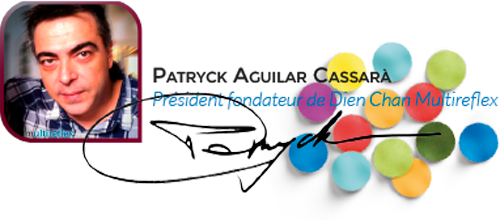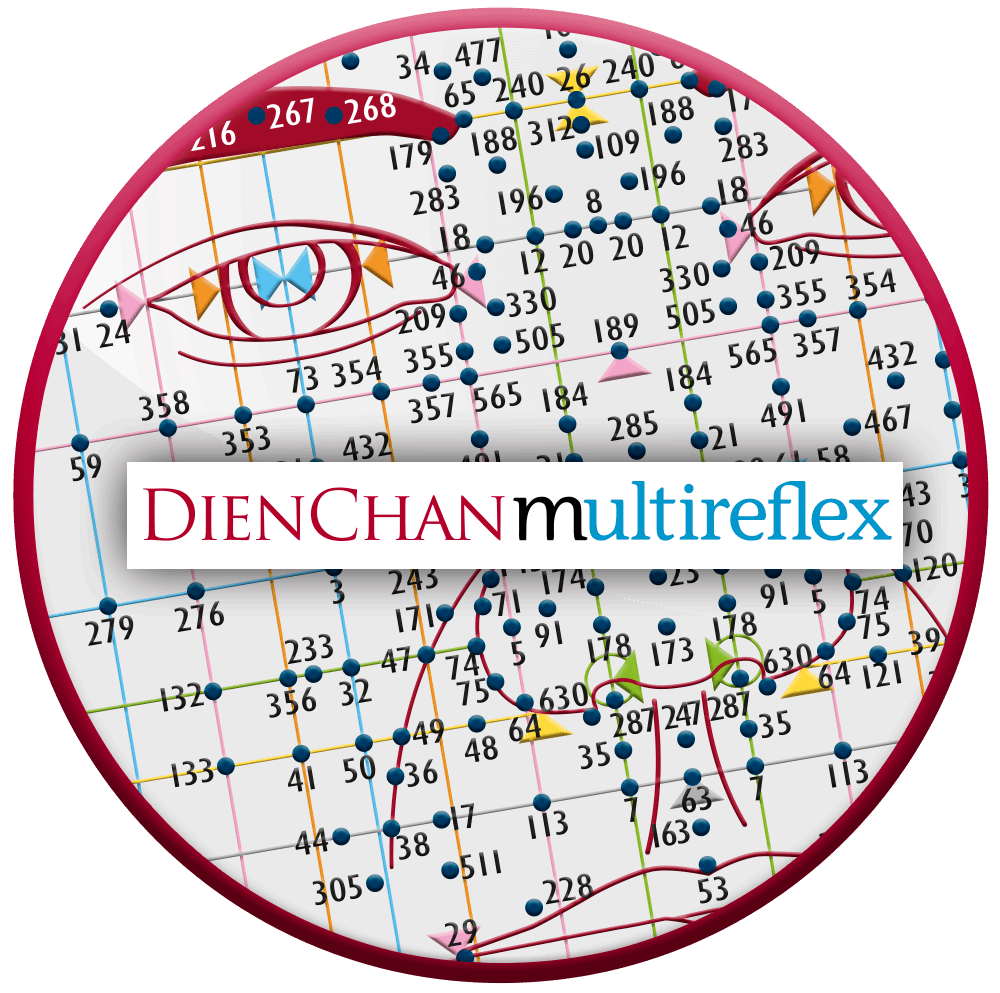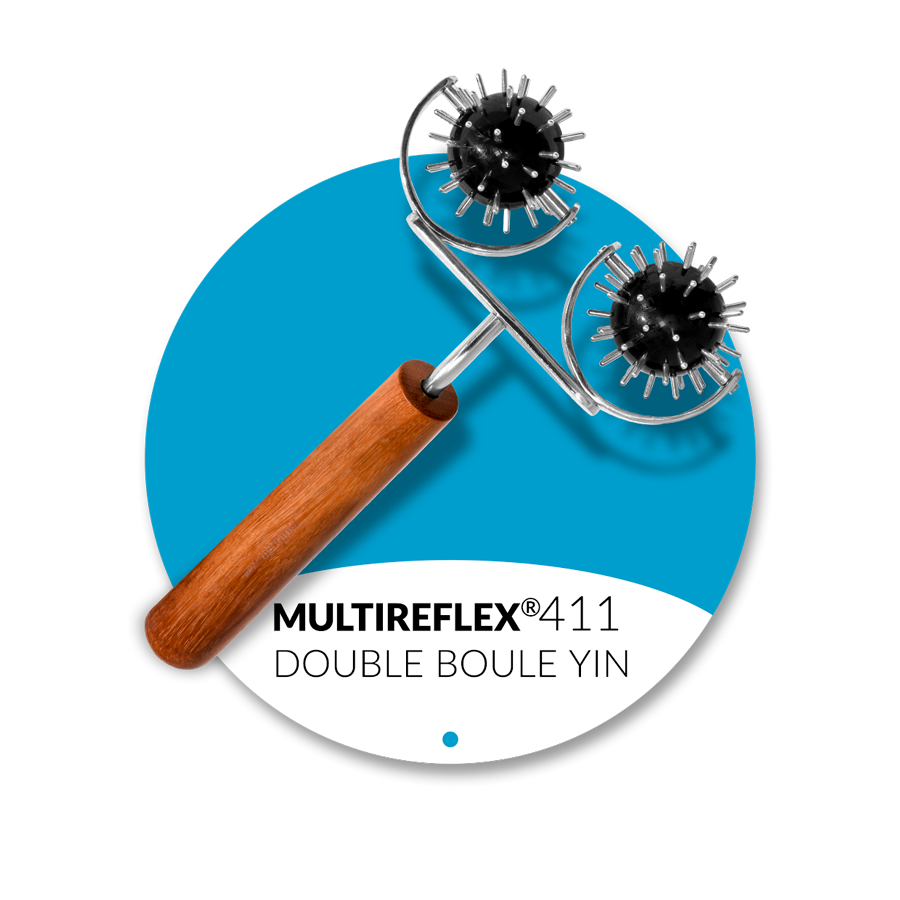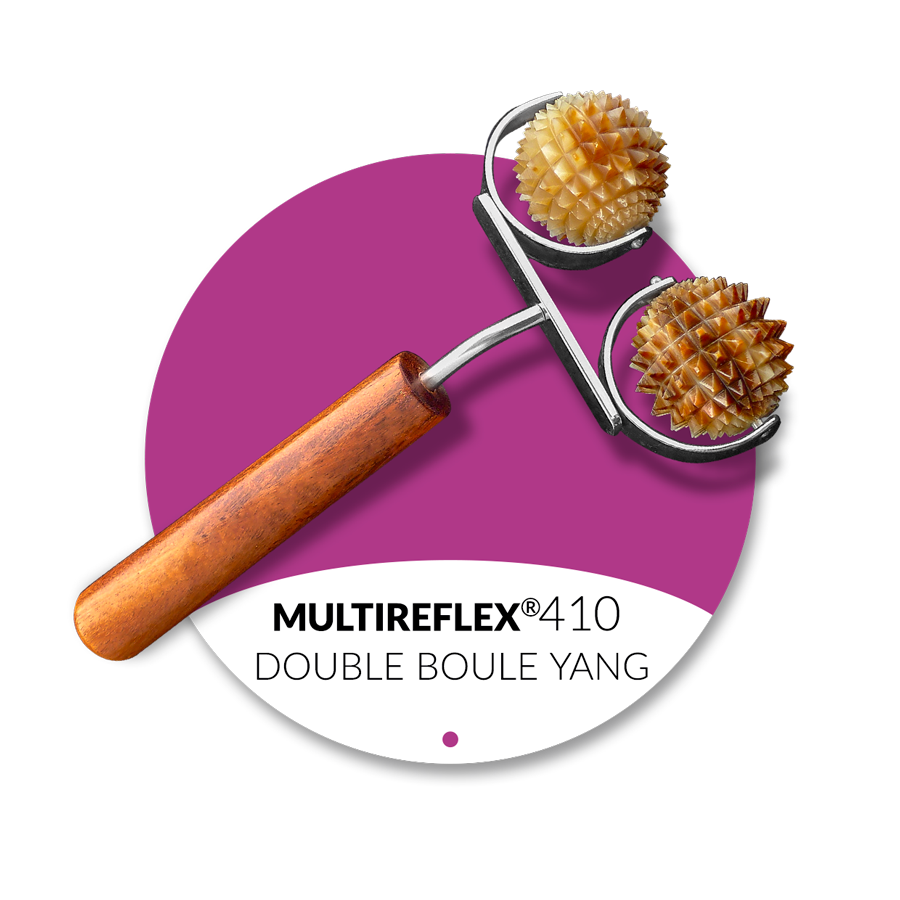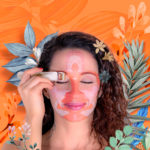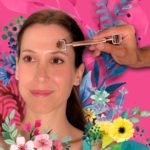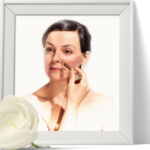Shoulder pain: causes, solutions, and a natural approach

Shoulder pain is one of the most common discomforts that significantly impact our daily lives. Whether it’s muscle tension, tendinitis, or other causes, it can hinder our movements, limit our activities, and affect our quality of life. These pains, often triggered by poor posture, injury, or intense physical exertion, require special attention to prevent them from worsening.
Fortunately, Dien Chan, the original method of facial reflexology, offers a natural, effective, and non-invasive alternative to relieve these discomforts.
This approach is based on a structured care plan that begins by assessing the person’s overall condition. Then, work directly on the painful area (if possible) to determine whether the suffering is of yin or yang nature. This allows the use of a multireflex tool with the opposite effect, as our goal is to restore overall balance and promote recovery.
Finally, consolidate the treatment by stimulating specific reflex points located on the face. These bqc·points will come from a constellation, and by retaining only the most sensitive ones, they will compose the personalised formula perfectly adapted to our client.
This method, unique to authentic Dien Chan, encourages the body’s self-regulation, reduces pain, and improves mobility, provided there is no serious injury requiring medical intervention at the hospital.
In this article, we will explore the common causes of shoulder pain and present easy and accessible techniques in Dien Chan. You will discover targeted protocols to relieve the injury, improve your flexibility, and restore your daily comfort.
Whether you are an athlete, a healthcare professional, or simply seeking a natural solution for your pain, this article will provide practical information to integrate Dien Chan into your care routine.
The care plan
The care plan in Dien Chan is not just a simple protocol but an invitation to structure your care. Practising Dien Chan is not limited to the use of bqc·points. Although Prof. Bùi Quôc Châu’s research consisted of identifying fixed points common to all faces, resulting in the map of 257 bqc·points, it is crucial not to neglect the use of reflex diagrams.
These diagrams, unique to Dien Chan, were discovered through the assembly of certain bqc·points. It is this combination of reflex diagrams and bqc·point formulas that gives Dien Chan its strength.
Moreover, our extensive experience accumulated since 2002 has allowed us to understand that we can make the most of the time allocated to each session to first consider the person’s overall condition. Indeed, when our consultant arrives stressed or tired, it is important to restore their overall balance. This promotes acceptance of the subsequent treatment and thus achieves much more significant and lasting results.
We have also found that it is much more effective to start with local work, i.e., directly on the body, using the most suitable multireflex tool for the situation. This bodily step allows us to determine whether we are dealing with a yin or yang issue.
Then, we exploit certain reflex diagrams by working the reflex zones with a smaller multireflex tool but having the same effect (yin or yang) as that discovered during the previous bodily step.
Finally, we consolidate the care by mobilising the energies involved in the disorder through the stimulation of specific points.
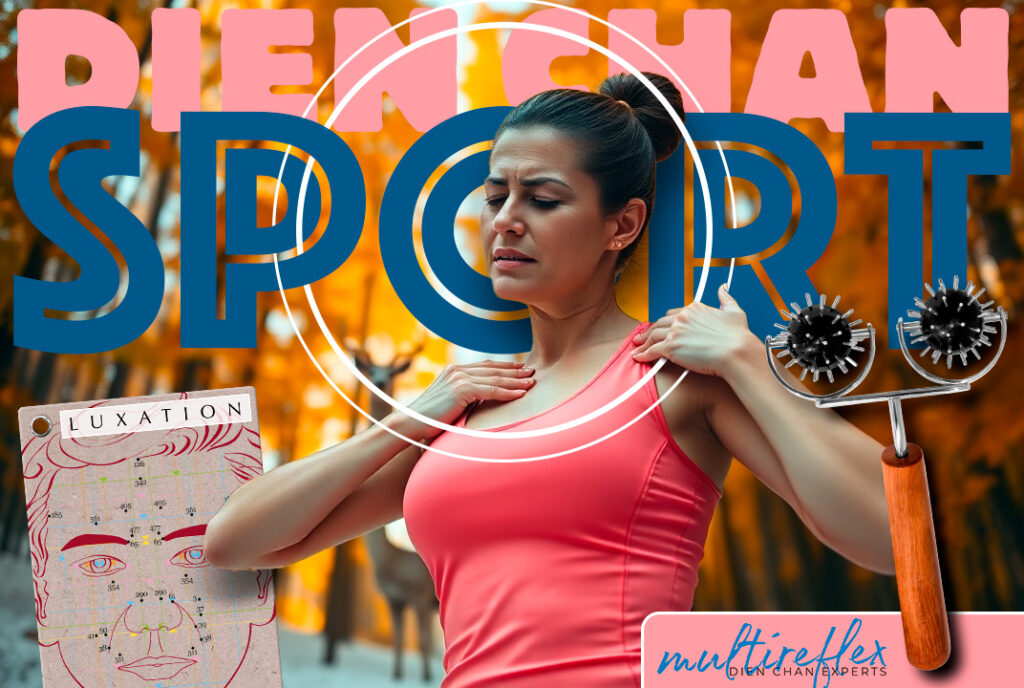
The objective of the International School of Multireflexology – Dien Chan (ISMDC) is to accompany you in developing your creativity so that you become the architect of your own care. For this, we offer you a care plan dedicated to shoulder pain, designed to take into account various causes. Be inspired by this proposal to develop personalised treatments adapted to each situation.
1 | General condition
There are many general conditions that can influence the effectiveness of a treatment. Most of the time, it is stress or fatigue, but it can also include challenging emotional contexts. Anxieties and other concerns should be taken into account if they risk constituting a hindering barrier for the continuation of the treatment.
To address these issues, we invite you to consult our article dedicated to emotional regulation www.dienchan.academy/dienchan-emotional
Here is a non-exhaustive list of common situations and appropriate solutions:
- Stress: use the “Preséance 124· 34·” with the Little-hammer nº128 to soothe the nervous system.
- Fatigue: energise vital energy with the “Yang formula”.
- Intoxication: apply the “Detox ritual” to support the elimination of toxins.
- Reflux: use the “cardia massage” protocol, performed along the left side of the nose.
These examples illustrate how to adapt your care according to the specific needs of your client to lay a solid foundation before proceeding with more targeted treatment.
2 | Bodily step
When faced with shoulder pain, we must first assess the situation precisely and interpret the expression of the disorder. This requires the ability to “translate” the information obtained during the dialogue with the person into Dien Chan.
For beginners, often influenced by biases inherited from Western medicine, this task can seem intimidating. This is why our training courses emphasise deconstructing these reflexes to develop a clearer vision and active listening.
Do not hesitate to consult the training schedule and online workshops to perfect your learning of authentic Dien Chan.
In this approach, we prioritise observing improvements rather than focusing solely on the pain (see article about improvement).
Identify the nature of the pain
Precise, hot, sharp, or acute pain corresponds to a yang situation. To address this, use a yin multireflex tool, such as the Double yin ball nº411.
Conversely, dull, cold, deep, or heavy pain is of yin nature. In this case, opt for the Double yang ball nº410.
Whichever tool is chosen, perform a series of about fifty back-and-forth movements on the painful area. Apply only the weight of the tool, without forcing. Between each series, ask the person about their feelings to evaluate the appearance of any improvement, even slight.
If no progress is observed, rephrase your questions to ensure that the initial description of the pain was well understood. Alternate between yin and yang effects and ask the person to specify which sensation feels more pleasant; this response is often a key indicator.
As soon as you notice an improvement, even minimal, you can move on to the next step, which involves working on the facial reflex zone corresponding to the shoulder. This will justify prolonging and deepening the effects of the treatment.
3 | Reflex step
After identifying the most appropriate effect to treat the pain, it is time to select a reflex diagram to guide our intervention.
Note that there is no best diagram. Each one represents a different access point to the regulation process, and the multireflex tool acts as a key to unlock tensions.
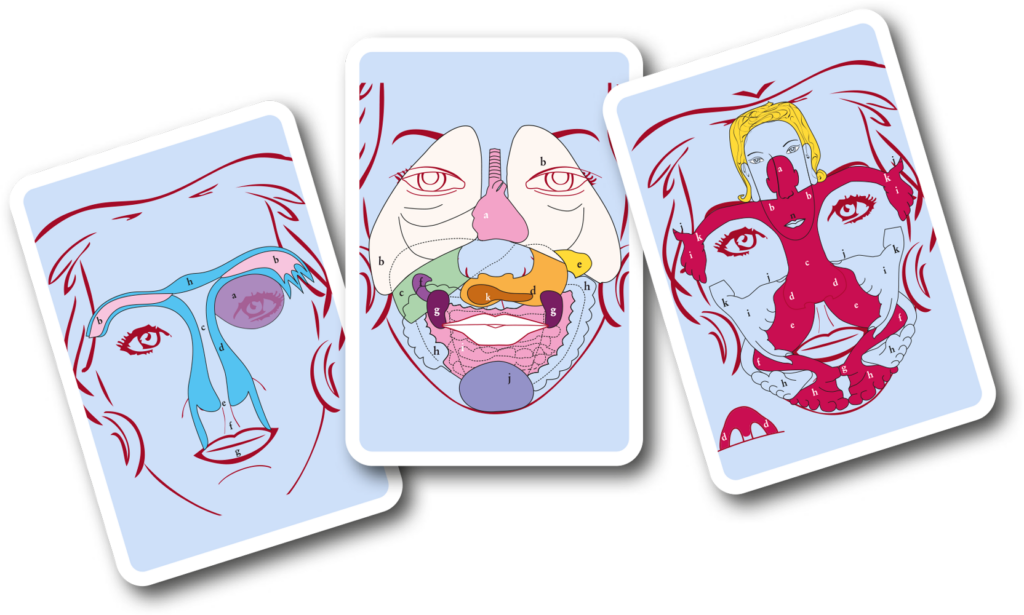
Although the goal is to relieve the shoulder, it is often wise to start with the overall treatment of the upper back. Thus, begin by selecting a reflex diagram that targets the shoulder girdle. To assist you in this choice, the video accompanying this article shows how Faceasit can guide you and help you avoid forgetting relevant diagrams.
Using the extremities diagram, you will notice that the representation of the “little red man” locates the shoulder girdle at the level of the eyebrow arch.
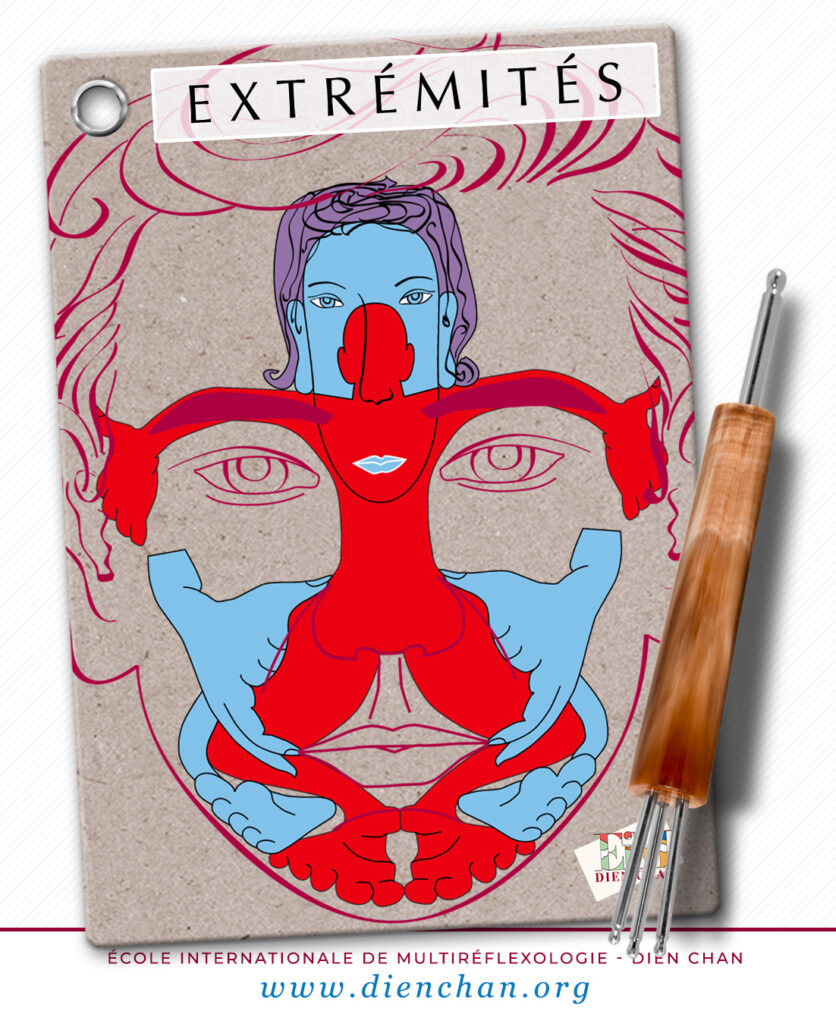
≥≥≥≥≥≥VIDEO Faceasit≤≤≤≤≤≤≤
For those who have the Faceasit app, here is how to find the relevant diagrams and the formula to consolidate the management of shoulder pain.
Practical steps
- 1. Choose a tool suitable for facial areas
- Yang effect with the Double mini yang ball nº307.
- Yin effect with the Double mini yin roller nº308.
Evaluate the improvement
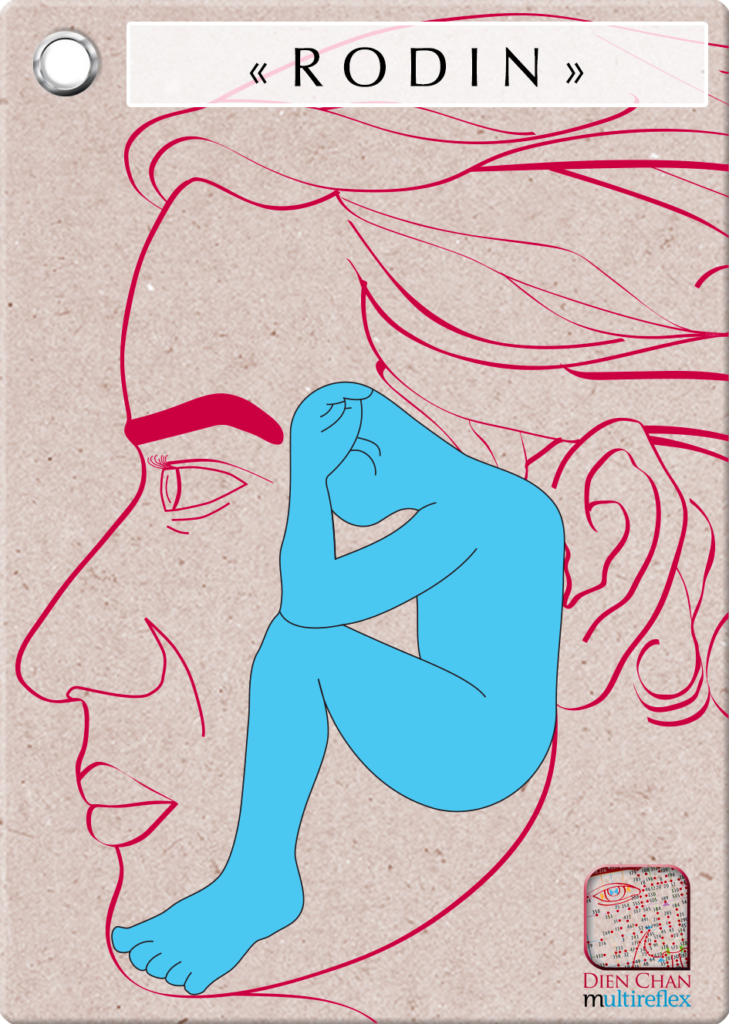
- If the improvement score increases, continue with this diagram.
- If no change is observed, move on to another diagram.
To refine your intervention, complement with the so-called “Rodin” diagram, where the shoulder’s reflex zone is located between the temple and the ear.
- Use the multireflex tool corresponding to the required effect (yin or yang).
- Practice a new series of movements in this area.
Continue to evaluate improvements and adjust your approach if necessary. This flexibility in using reflex diagrams allows optimising results and better meeting the specific needs of each consultant.
4 | Consolidation
If your previous intervention is satisfactory, we can then reinforce and stabilise the treatment by revitalising the energies involved.
We will prepare a constellation composed of bqc·points acting on the muscles, tendons (in accordance with Western medicine) and taking into account the meridian paths (TCM) that pass through the shoulder.
Indeed, some pains can also be caused by imperceptible energetic blockages. By stimulating bqc·points acting on a specific meridian, we succeed in encouraging the flow of vital energy (Qi).
As you can see, Dien Chan draws its great strength and achieves the best results when we combine knowledge.
Once our constellation is established, we will test and retain only the most sensitive bqc·points to develop a fully personalised Dien Chan formula adapted to the current situation of our consultant.
Faceasit is the ideal tool to inspire and create individualised treatments (see video).
For our readers who have not had the chance to be offered an iPad to use Faceasit, we will break down a proposal. And to illustrate the steps to follow precisely, let’s take the example of a dislocation of the left shoulder.
Recall that a shoulder dislocation occurs when the humerus comes out of its joint cavity at the joint level (glenohumeral). This can occur following trauma, such as a fall, or forced movement. Symptoms include intense pain, inability to move the shoulder, visible deformity, and sometimes numbness or weakness in the arm.
Assume that the shoulder has returned to its correct position, but there is damage to the muscles and tendons that have been stretched, torn, and may also be bruised due to the tensions experienced during the dislocation or the period of immobilisation.
bqc·points to test to compose a constellation:
- The shoulder: 511· 65· 477·
- The muscles: 156· 38· 37·
- The tendons: 50· 41· 156·
- Lubricate: 354· 38· 61– 3–
Moreover, the trauma may have disrupted the energetic circulation of the meridians passing through the shoulder. This consideration is essential, as it will guide us not only in the choice of bqc·points for our formula but also in our patient interview.
In traditional Chinese medicine (TCM), the shoulder is associated with several energetic meridians, mainly those that pass through this region. We can solicit them thanks to the bqc·points of Dien Chan.
bqc·points to test to complete our constellation:
- The Large Intestine meridian that crosses the shoulder, particularly the deltoid region: 561· 38· 342·
- The Stomach meridian touches certain frontal areas of the shoulder: 39· 405·
- The Triple Warmer meridian is directly involved in the shoulder region: 290· 185· 235·
- The Spleen and Liver meridians are concerned with tendon and muscle tensions around the joints: 37· 50·
- The Bladder meridian may be engaged through its connections with the back muscles: 87· 126·
After eliminating duplicates, we obtain a proposal to test. With Faceasit, you will notice that the selection includes more bqc·points, but for pedagogical purposes, we limit ourselves here to the points we consider important for this example. This does not mean that they are the best; it is up to you to test and adapt your choice according to your needs.
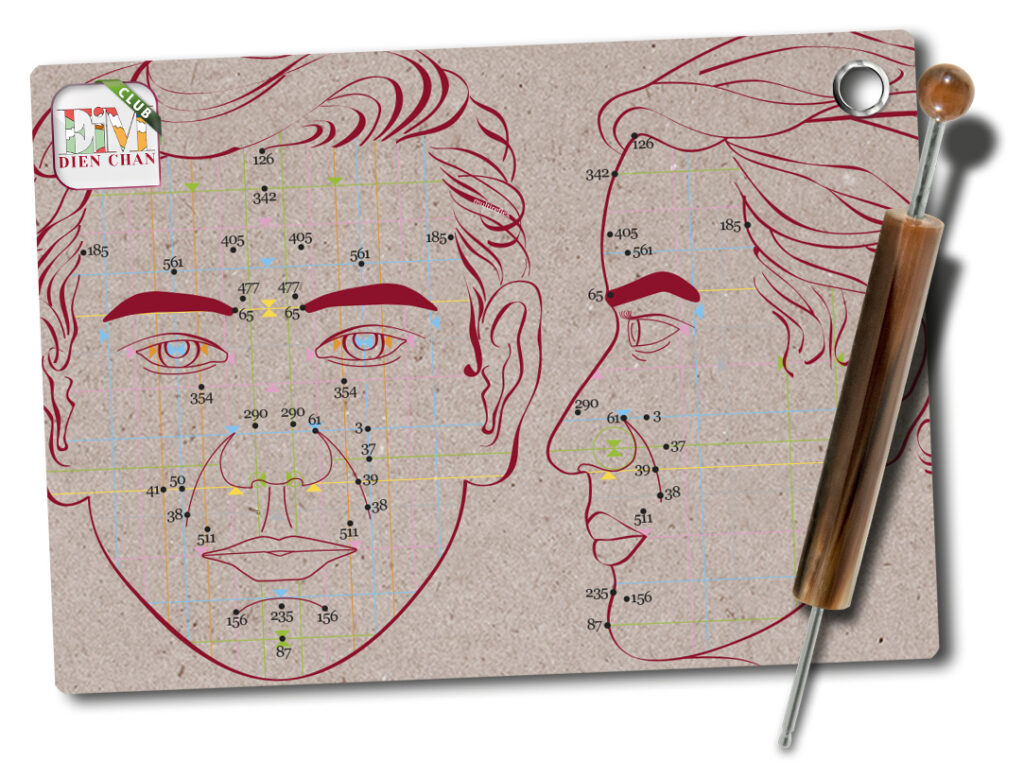
We thus obtain this constellation:
511· 65· 477· 156· 38· 37· 50· 41· 354· 61⁻· 3⁻· 561· 342· 39· 405· 290· 185· 235· 87· 126·
Remember that bqc·points followed by a ‘–’ sign means that we only stimulate the left one (yin to encourage internal moisture) and a ‘+’ sign to the right (yang).
5 | The prescription
At the end of the session and to prolong the benefits of the treatment, it is essential to advise your client to continue with simple exercises to do at home.
Depending on their general condition, you can recommend the 12 morning massages (12.multireflexology.com).
Regarding their shoulder, show them how to perform self-massage directly if the bodily step has produced positive reactions. It is also wise to explain how to continue on the reflex zone that has given the best results.
With one or two multireflex tools — which you can offer for purchase or indicate where to procure them on www.DienShop.com — your client will be able to consolidate the effects of your treatment
Moreover, if you estimate that several sessions are necessary and that they apply your advice, their next visit will allow you not to have to start from the beginning. You will thus obtain much deeper and lasting results.
Conclusion
Caring for shoulder pain in Dien Chan involves offering a natural, effective, and personalised approach to support the body’s regulation process. By combining bodily steps, facial steps, and the use of appropriate multireflex tools, you can relieve pain, improve mobility, and restore the well-being of your consultants.
Remember that each case is unique! Attentive listening, precise evaluation, and adaptation of techniques are essential to achieve the best results. By involving your clients in the follow-up of their treatment, especially through simple exercises to practice at home, you help them become actors in their own health.
Dien Chan is not limited to relieving symptoms. It invites a holistic and preventive vision of health, where each treatment contributes to the overall harmony of the body and mind.
Whether you are a beginner or an experienced practitioner, this protocol will allow you to refine your skills while offering lasting relief to your clients.
To further explore the benefits of Dien Chan, discover the rich and varied resources of our blog (dienchan.academy) and our channel www.DienChan.tv teeming with inspiring advice videos.
Dienchannely yours,
